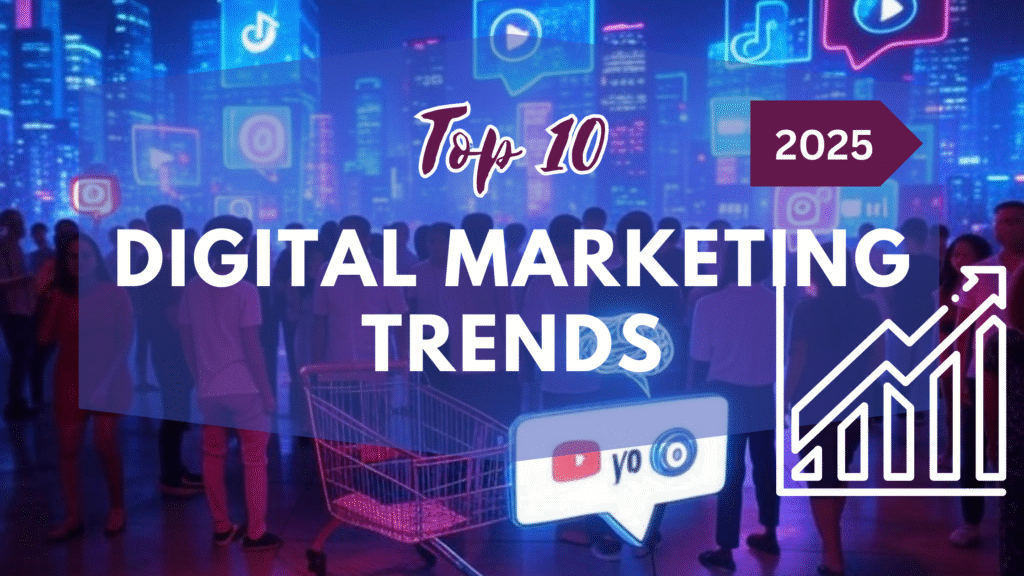Introduction
Social media advertising is on track for a 15% increase in ad spend in 2025, fueled by AI-driven targeting and the rise of immersive AR/VR experiences. As data privacy regulations tighten, brands must balance innovation with compliance to maximize impact. This guide explores why social media advertising matters, offers actionable strategies, and highlights key trends for 2025. Targeting high-searched keywords like “social media advertising,” “AI targeting,” “AR/VR ads,” and “data privacy,” this blog empowers marketers to thrive in this dynamic space.
Why Social Media Advertising Matters
Social media advertising remains a powerhouse for brand growth, with significant trends shaping its 2025 landscape:
Ad spend on social platforms is projected to grow by 15%, reflecting increased investment (Smart Insights).
AI-driven targeting improves return on investment (ROI) by 25%, enabling precise audience segmentation (Smart Insights).
Immersive AR/VR ads increase engagement by 30%, offering interactive experiences that captivate users (Exploding Topics).
65% of users expect privacy compliance, with regulations like GDPR and CCPA influencing ad strategies (Search Engine Journal).
Social media ads drive 50% of online sales, underscoring their conversion power (Exploding Topics).
These factors make social media advertising a critical channel for reaching and converting audiences.
Key Strategies for Social Media Advertising Success in 2025
To boost social media advertising, brands must leverage technology and prioritize user trust. Below are seven actionable strategies:
1. Use AI Targeting
AI analyzes user data to deliver personalized ads, improving ROI by 25% through precise targeting (Smart Insights).
Why It Matters: Personalized ads enhance relevance and conversion rates.
Actionable Step: Use Facebook Ads Manager with AI tools to create custom audiences based on behavior.
2. Incorporate AR/VR Ads
AR/VR ads, such as virtual try-ons or 360-degree experiences, boost engagement by 30% by offering immersive interactions (Exploding Topics).
Why It Matters: Immersive ads create memorable brand experiences.
Actionable Step: Design an AR filter with Snapchat Ad Manager to let users try products virtually.
3. Ensure Privacy Compliance
With 65% of users demanding transparency, complying with GDPR and CCPA through clear consent forms and data minimization is essential (Search Engine Journal).
Why It Matters: Compliance builds trust and avoids penalties.
Actionable Step: Implement OneTrust to manage consent and ensure regulatory adherence.
4. Optimize for Platforms
Tailoring ads to platform strengths—e.g., short videos for TikTok, professional content for LinkedIn—maximizes reach and effectiveness.
Why It Matters: Platform-specific ads improve performance.
Actionable Step: Create a LinkedIn carousel ad using LinkedIn Campaign Manager to target B2B audiences.
5. Test A/B Variations
A/B testing ad copy, visuals, and calls-to-action (CTAs) identifies top performers, with 20% higher click-through rates for optimized ads (Smart Insights).
Why It Matters: Testing refines ad efficiency.
Actionable Step: Use Google Ads to run A/B tests on headline variations.
6. Leverage User-Generated Content
Incorporating user reviews or photos in ads builds authenticity, increasing trust and engagement by 15% (Exploding Topics).
Why It Matters: Authentic content resonates with audiences.
Actionable Step: Share customer photos via Instagram Shop to enhance credibility.
7. Track Performance with Analytics
Monitoring metrics like click-through rates, conversions, and cost-per-click (CPC) ensures campaign success using platform analytics.
Why It Matters: Data-driven insights optimize ad spend.
Actionable Step: Use Meta Business Suite to track ad performance and adjust budgets.
Comparing Social Media Advertising Platforms
Platform | Key Feature | Best For |
|---|---|---|
AI targeting | Broad audience reach | |
Snapchat | AR/VR ads | Interactive campaigns |
OneTrust | Privacy compliance | Regulatory adherence |
Platform optimization | B2B marketing | |
Google Ads | A/B testing | Performance refinement |
User-generated content | Visual storytelling | |
Meta Business Suite | Analytics | Campaign tracking |
Case Studies
Nike’s AR Campaign: Nike’s AR shoe try-on ads on Snapchat increased engagement by 35% (Exploding Topics).
Coca-Cola’s AI Targeting: Coca-Cola’s AI-driven Facebook ads boosted ROI by 28% (Smart Insights).
Challenges and Considerations
Social media advertising faces challenges:
Ad Fatigue: Overexposure risks; rotate creative regularly.
Privacy Restrictions: Stricter laws limit data use; prioritize consent.
Cost Increases: Rising ad prices require efficient budgeting.
Mitigate these by refreshing content, using privacy tools, and optimizing spend with analytics.
Conclusion
Boosting social media advertising in 2025 relies on AI targeting, AR/VR innovations, and privacy compliance to maximize engagement and ROI. Optimizing for platforms, testing variations, and leveraging user content further enhance success. Start with an AI-targeted campaign, experiment with AR ads, and refine based on analytics. With these strategies, you’re set to excel in the evolving social media advertising landscape.


